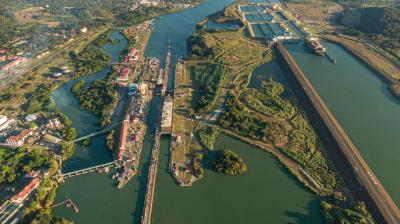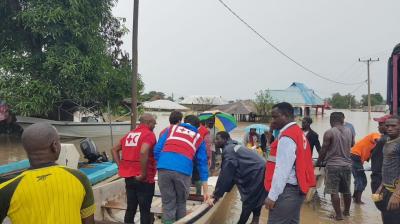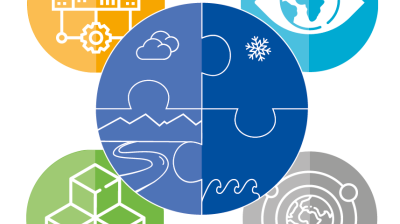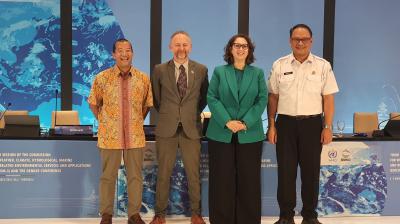Implementing Coastal Inundation Early Warning Systems: a blueprint for EW4All
WMO has established several successful coastal inundation Early Warning Systems (EWSs) in countries around the world over the last decade (Swail et al 2019). The knowledge acquired during the Coastal Inundation Forecasting Demonstration Project (CIFDP) (Swail 2021) led to the development of a comprehensive end-to-end guide for building new coastal inundation warning systems
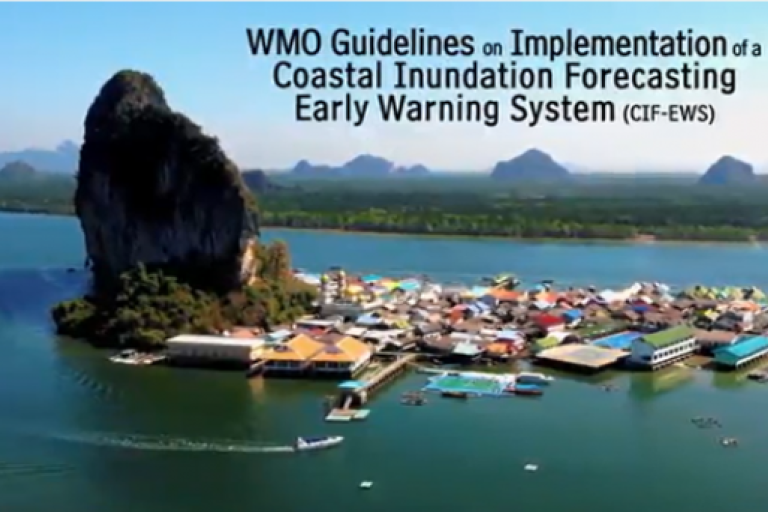
The Guidelines on Implementation of a Coastal Inundation Forecasting–Early Warning System (WMO-No. 1293, 2022) covers a range of coastal hazards, including tsunami, as part of a multi-hazard early warning system (MHEWS). This blueprint for coastal MHEWS will also be an underpinning element of implementing any type of weather, water, climate or ocean related MHEWS in the Early Warnings for All (EW4All) initiative.1
The Guidelines provide a range of ready-to-use templates to assess any country’s current technical capacity, areas of risk, required project management and documentation for sponsors and other stakeholders. Thus, countries can use the Guidelines to immediately commence any type of MHEWS planning and to engage with sponsors.
Impacts of Natural Hazards on Coastal Communities
Coastal inundations are caused by climate, weather, flooding, ocean and geophysical hazards (see Box), occurring either individually or in combination, which is often the case. Apart from localized flash flooding, coastal flooding is typically caused when waves from riverine floods interact with ocean waves, storm surges or tidal effects. The river’s flood wave hits coastal waters that are at an elevated level – acting like a dam wall. This sets off complex processes in the estuarine area, including a backwater effect that can exacerbate coastal inundation. In smaller river basins, flood formation and travel time from upper catchments to the river mouth tend to be relatively short (a few hours).
Scientists have observed that these natural hazards are increasing in intensity and frequency due to climate change, increasing the severity of their impacts, especially in coastal regions affected by sea level rise such as Small-Island Developing States (SIDS) and other coastal nations.
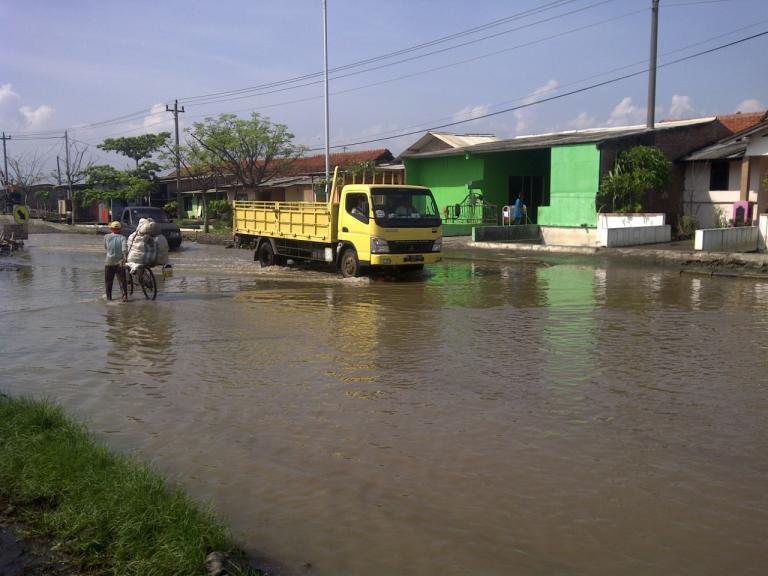
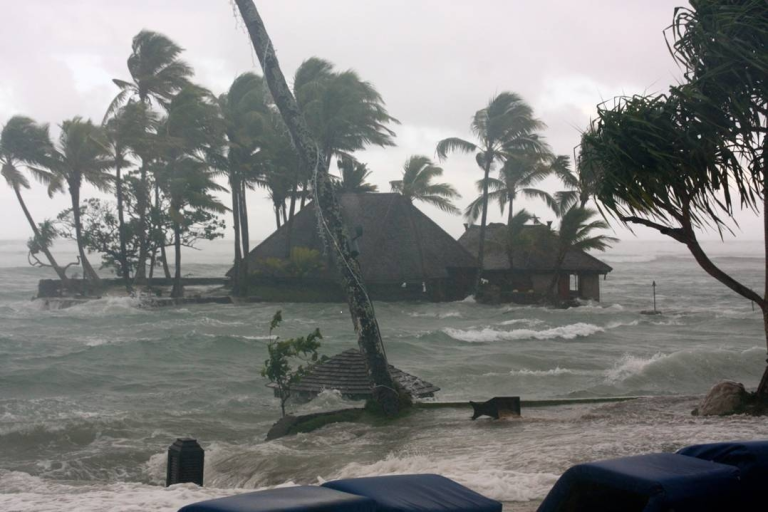
Coastal inundation occurs along vulnerable coastlines (examples – left: Indonesia and right: Fiji). The combination of storm surges – typically from tropical cyclones or extratropical storms – and waves, with riverine flooding at various tidal states regularly leads to major loss of life. At least 2.6 million people are estimated to have drowned due to coastal inundation caused by storm surges over the last 200 years (Dilley et al., 2005).
The Operational Implementation Model
As well as providing key background information on coastal hazards and other detailed scientific and technical advice, the Guidelines function as an Operational Implementation Model (OIM) which has, as its main goals:
- Identify and help countries support end user needs
- Encourage full engagement of all stakeholders
- Support coastal risk and vulnerability assessments
- Facilitate the transfer of technology (soft, hard and intellectual) to the adopting countries
- Initiate the development and implementation of forecasting and warning services
- Promote capacity building and sustainability of systems and processes.
The approach adds value and detail for governments, sponsors, and ocean, meteorological and hydrological agencies as well as for emergency management agencies and other stakeholders. Ten steps are recommended to ensure good management and sustainability of MHEWS:
- Undertake a national risk assessment of coastal natural hazards
- Conduct an inaugural stakeholder meeting with ministerial/government agencies and sponsors
- Undertake a technical assessment of all in country and regional capabilities and requirements, as a precondition for developing the capability to issue impact based forecasts and warnings
- Ensure expert to expert communications, including “last mile” outreach to communities
- Ensure donor and sponsor engagement (internal and external)
- Establish a Project Steering Group (PSG) with major stakeholders and technical experts, and appropriate PSG links to WMO Regional Centres. Prepare a Concept of operations
- Build and strengthen all system components using a project development plan with associated governance
- Test the MHEWS and expert training using technical and scenario based approaches
- Ensure training for all elements is in place and that they are sustainable
- Undertake a go-live assessment in consultation with the PSG and all stakeholders prior to operational implementation.
These are flexible enough to suit countries with limited resources for instrumentation and staffing as well as those with higher capacity.
The OIM process starts with practical guidelines for making a thorough assessment of hazard risks in vulnerable coastal communities. It then goes on to provide clear processes for engaging with in-country agencies involved with coastal and emergency activities. There are detailed processes for WMO engagement as well as that of other potential sponsors and donors. A template on how to make a case for support from potential donors and sponsors is also available.
Users will learn how to establish a simplified Project Development Plan and outline a Concept of Operations. The links to WMO for the implementation project include provisions for global and regional modelling, instrument standards and training as well as quality management procedures. A process can be followed to structure the project on the background analyses and stakeholder engagement. Financial targets, accountability and time critical deliverables are also incorporated.
There is also a section on training, which includes a simple but critical procedure to test the operation of all components of the coastal MHEWS. The training material is for all the multi-hazard disciplines: hydrological forecasting, severe weather, marine weather and oceanographic fundamentals such as storm surge forecasting.
Awareness education for local coastal communities is critical for warnings to be effective in saving lives and property, and for local custodianship of offshore and onshore instruments such as buoys. Short, easy to understand awareness videos are useful tools in this area. For examples, WMO produced two videos – for the Pacific Islands and Caribbean – which are available in English, French, Spanish and local languages. The videos show “what to do” in the event of a coastal flood and provide valuable community education on the purpose and benefits of ocean buoys for early warning systems, and the need to protect them from damage.
The Future: an OIM for EW4All
The Guidelines provide a practical path forward for a full operational implementation model for many MHEWS that will be established over the next five years and beyond.
The OIM provides a design blueprint that can be used for the implementation of any future MHEWS. The Guidelines are designed for coastal MHEWS, however, many of its fundamental steps are in common with those for other EWS and could be easily adapted with appendices outlining other hazards.
Accordingly, the Guidelines will be of considerable value for the other MHEWS that are needed to meet the requirements of the EW4All initiative. The Guidelines have also been endorsed as an activity of the UN Decade of Ocean Science for Sustainable Development.
_________________________
Footnotes
1. The background to the CIFDP transition to the Guidelines, and our proposal to use them as a blueprint for other MHEWS to meet the EW4All objectives, is covered more fully by Canterford et al (AMS 103rd Annual Conference, Denver, Co., USA, 2022-3).
References
Canterford, R, Grimes, S and Swail, V. 2023: World Meteorological Organization’s Successful Operational Multi-Hazard Coastal Inundation Early Warning Systems: Blueprint For The Future, AMS Annual Confrence, Denver, Co., USA.
Swail, V., S. Grimes, P. Pilon, R. Canterford, C. Barrett and Y. Simonov, 2019: Early warnings of coastal inundation. WMO Bulletin, 68(2): 48–55.
Swail, V. 2021: Multi-Hazard Early Warning Systems: The Coastal Inundation Forecasting Initiative. WMO Bulletin, 70 (1): 105-106.
WMO, 2022: Guidelines on Implementation of a Coastal Inundation Forecasting–Early Warning System (WMO-No. 1293), Geneva. Summary Video, 2023.
———, 2022b: Early Warnings for All Executive Action Plan 2023-2027, Geneva
———, 2020a: Coastal inundation – Public awareness for the Pacific Islands. Video.
———, 2020b: Ocean buoy awareness. Video.
Acknowledgements
We would like to acknowledge Dr Yuri Simonov, co-author of the Guidelines with Dr Canterford. WMO funding for the development of the Guidelines was supplemented by extra-budgetary sources from the Climate Risk Early Warning Systems (CREWS) initiative and the Korea Meteorological Administration.




